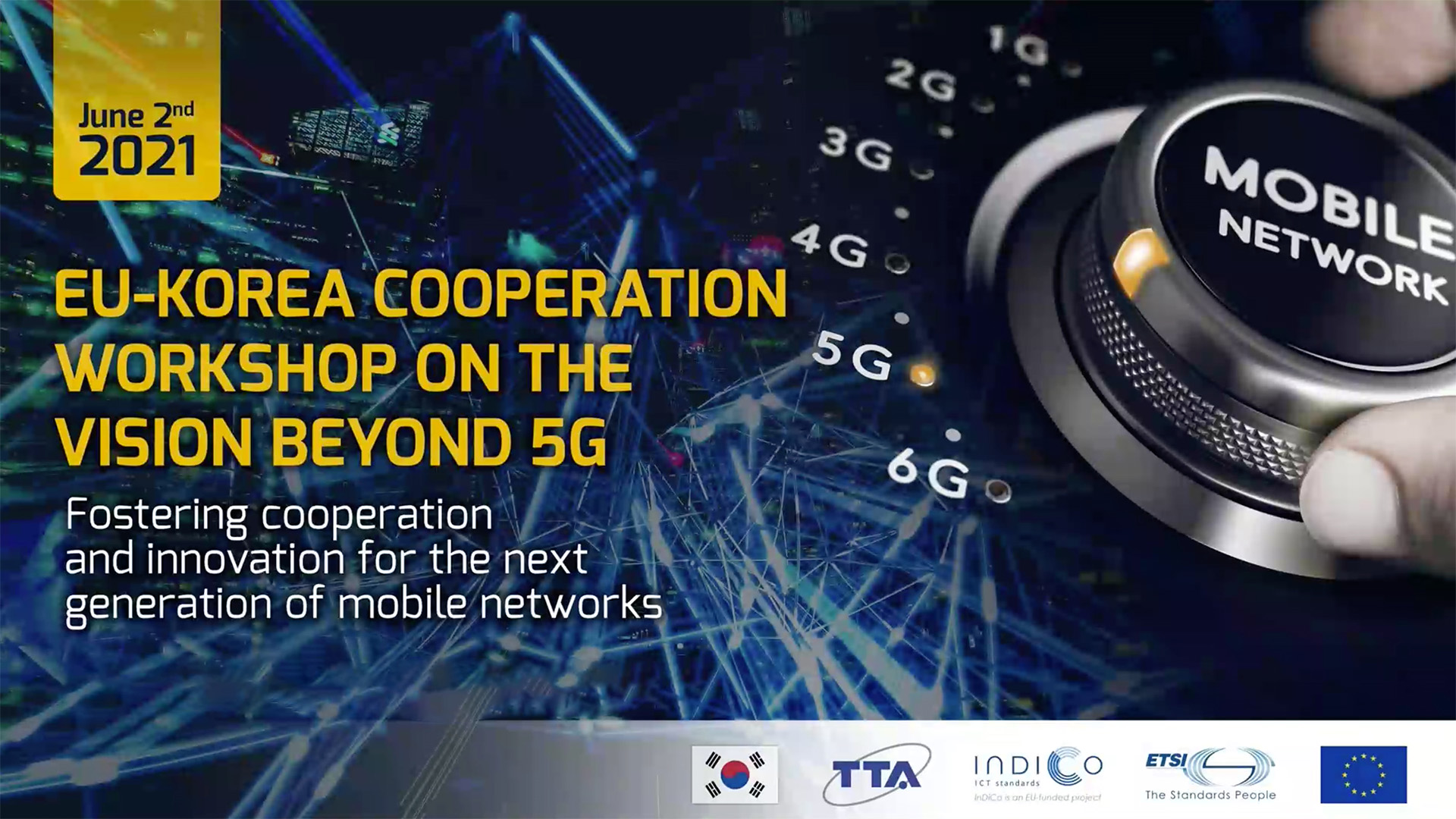
On June 2nd, ETSI and TTA of South Korea hosted a cooperation workshop discussing the roadmap for 5G and beyond. This online workshop featured speakers and panellists from the European Commission’s DG Connect, South Korea’s Ministry of Science andTechnology, Hankyong National University, Yonsei University, IITP (Institute of Information & Communications Technology Planning and Evaluation), 5G Industry Association, 5G Alliance and of course ETSI and TTA.
5G is poised to dramatically transform industries and society as we know them. These new evolving telecommunication networks, that are high bandwidth, low latency and ultra-reliable, will not just supercharge smart phones - they will provide a new platform that will power the next generation of solutions that will transform sectors such as healthcare, manufacturing agriculture and transportation.
A vision for the future of 5G and beyond was laid out by various speakers. This workshop was a continuation of very productive collaborations between the European Union and Republic of Korea in the areas of 5G, super-computing, platforms, artificial intelligence, connected cars and smart cities.
An overview was provided of Korea’s roadmaps towards digitalization. And specifically, the Digital New Deal of Korea initiative, which is aimed at setting the foundation for the next generation. 5G is a critical part of this initiative.
An overview was provided of the main tenets that will likely go into 6G, including new applications such as holographics, massive m2m and ‘Internet of Senses’. It also will likely encompass fully automated infrastructure, ultra-low energy, vertical uses cases beyond 5G, ultra-high security and sustainable development goals. AI, Big Data and Hyperconnectivity are bringing profound changes to society.
For Korea, it was outlined there are three primary drivers of 6G – Policy Lead, Tech-Push, and Need-Pull. The Policy Lead drivers are illustrated by government lead initiatives like the Korean ‘Digital New Deal.’ The Tech-Push driver is illustrated by the industry led initiatives and technologies that are enabling the convergence of the physical world with the digital world. The Need-Pull driver comes out of societal areas, such as healthcare, education, labor, transportation, culture/arts and community safety.
The future development directions of 6G will likely focus on the extending and improving on the areas where 5G has limitations – increasing the speed and volume of traffic it can support, reducing end-to-end latency, securing air coverage to support more drone/flying transportation technologies, and new innovations by applying AI in more areas of wired and wireless. Korea sees the standardization process as an excellent opportunity to enhance and extend the industry, academia and private experts and also as a key driver for patent-protected local innovations.
It was highlighted that for most vertical industries, 5G and 6G are not part of their core business. Manufacturers of course need to explore 5G but they also need to look into things like AI or 3D printing and other emerging technologies. 5G is just a building block for many manufacturers and thus it is critical that it is as simple as possible for industry to be engaged in the standardization process, in joint projects and in collaborative initiatives. And it’s important that strong vertical associations exist that can bring together users, to agree amongst themselves on the basic requirements of the network so that the network that is built incorporates their use cases, their requirements and their specific needs. These vertical associations are working well with 5G but it will be important that there are stronger associations focusing on 6G, with clear input into the standards process – and the standards are very open to these requests from vertical industries.
It’s important the key issues, such as privacy, security, trust, energy efficiency and resource efficiency, are discussed early in the process. As 6G is still in its infancy and in the concept stage, it’s still being decided what 6G will become. Therefore, the exchange of information and meaningful collaborations across the globe are extremely important – to align visions, to align timescales and to align messages, with a common willingness that there will be one 6G global standard.